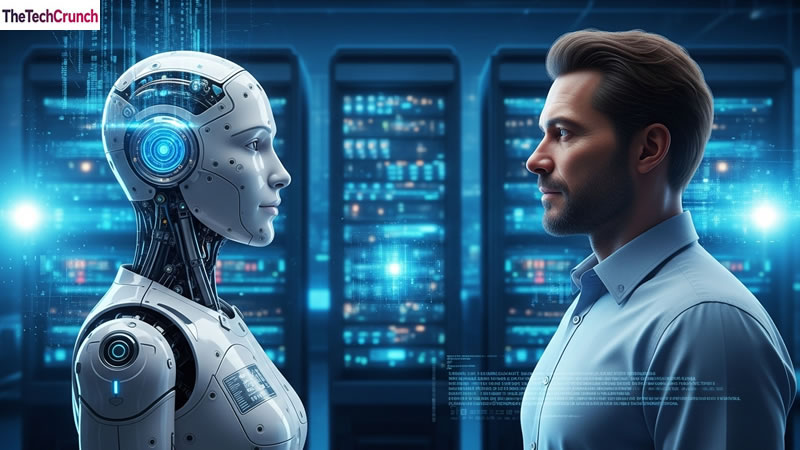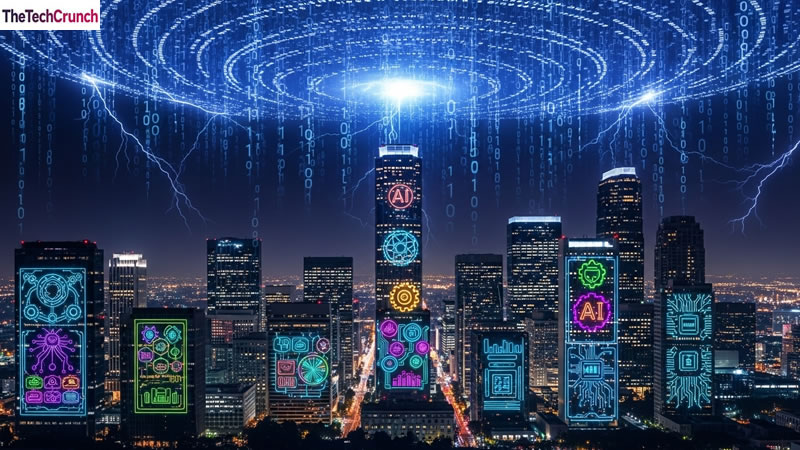Silicon Valley, the heart of global technological innovation, has once again become the focal point of intense debate. This time around artificial intelligence safety. The region that birthed transformative technologies like smartphones, social media, and cloud computing is now leading the charge in the AI revolution.
Stay up to date with the latest technology in TheTechCrunch. This covers artificial intelligence, mobile and web apps, modern things, cybersecurity, and general technical news. From AI’s successes to chat and generative tools. Such as smartphones, laptops, and wearables’ special reviews. TheTechCrunch gives an insight into this case.
Yet, its rapid advancements are causing alarm among AI safety advocates who fear that innovation may be outpacing caution. The clash between progress and prudence has never been more visible, as the tech industry races toward increasingly powerful AI models with limited regulatory oversight.
The AI boom, driven by companies like OpenAI, Anthropic, and Google DeepMind, has created unprecedented opportunities but also profound risks. While developers emphasize breakthroughs in natural language processing, robotics, and generative tools.
Critics argue that the current pace of deployment overlooks ethical and existential dangers. This growing tension between Silicon Valley’s profit-driven momentum and safety experts’ cautionary voices has turned the AI debate into one of the most pressing issues of our time.
The Rise of AI and the Fear of Losing Control
In just a few years, artificial intelligence has evolved from a niche research field into a trillion-dollar industry. Systems capable of generating human-like text, realistic images, and even autonomous decisions have revolutionized everything from education and entertainment to healthcare and defense.
Yet, this explosion of capability has reignited a fear long held by AI researchers—the possibility of losing control over intelligent systems. Safety advocates, including figures from organizations such as the Center for AI Safety and the Future of Life Institute, warn that the race to build smarter models could lead to unforeseen consequences.

These risks include the spread of misinformation, biased decision-making, and, in extreme cases, the creation of systems that act autonomously in ways that conflict with human interests. Some experts even draw parallels between the AI arms race and the nuclear race of the 20th century, emphasizing that small missteps could have global ramifications.
Despite these warnings, Silicon Valley continues to push boundaries. The competition to dominate the AI market is fierce, with companies releasing increasingly advanced models on aggressive timelines. This has led to growing concern that innovation is being prioritized over safety, creating an environment where experimentation trumps ethical restraint.
Silicon Valley’s Philosophy: Move Fast, Build Everything
The culture of Silicon Valley has always celebrated speed and disruption. The philosophy of “move fast and break things,” popularized by early tech giants like Facebook, still underpins much of the region’s approach to innovation. For AI startups and major players alike, the race to achieve technological dominance leaves little room for hesitation.
Executives argue that slowing down development could allow competitors—both domestic and international—to seize control of the market. This mindset has fueled a kind of technological arms race, where being first is often valued more than being safe. The same energy that once propelled Silicon Valley’s software boom now drives the AI surge, but the stakes are dramatically higher.
Critics argue that this relentless pursuit of progress comes with serious ethical blind spots. The deployment of untested or poorly regulated AI models in sensitive areas such as finance, healthcare, and national security could have devastating outcomes. Yet, Silicon Valley’s investment culture rewards rapid innovation and high returns, not long-term safety planning.
The Pushback from AI Safety Advocates
AI safety advocates are not opposed to progress—they are concerned with the manner and speed at which it unfolds. Their core message is simple: innovation without safety is a recipe for disaster. Many of these advocates call for stronger government regulation, transparency in AI training data, and mandatory testing protocols before public deployment.
Organizations such as the Alignment Research Center and the Partnership on AI emphasize the importance of ensuring that artificial intelligence aligns with human values and intentions. They propose frameworks for “AI alignment,” aiming to create systems that understand and respect human goals. However, these efforts often face resistance from corporate developers who view regulation as a barrier to growth.
Tensions have even emerged within the AI community itself. Some researchers have left major AI labs citing ethical concerns, arguing that corporate pressures compromise safety. High-profile departures from companies like OpenAI and Google have highlighted the growing internal conflicts between research integrity and business priorities.
Government and Global Efforts Toward Regulation
While Silicon Valley continues its rapid innovation cycle, governments worldwide are scrambling to catch up. The United States, the European Union, and the United Kingdom have each introduced AI governance initiatives designed to ensure responsible development. The European Union’s AI Act, for example, seeks to classify AI systems based on risk levels and impose strict compliance requirements for high-risk applications.

In the U.S., the Biden administration has urged companies to commit to voluntary AI safety standards, focusing on transparency, data security, and accountability. However, critics argue that these measures remain too lenient and lack enforcement power. Without clear regulatory frameworks, they fear that companies may continue to prioritize profit over precaution.
Global cooperation on AI safety remains limited, with nations pursuing independent strategies driven by economic and geopolitical interests. This fragmented approach risks creating inconsistent safety standards, especially as powerful AI systems transcend national borders.
The Future of AI: Can Safety and Innovation Coexist?
As AI continues to evolve, the central question remains: can humanity strike a balance between innovation and safety? Many experts believe it is possible, but it requires a cultural shift within Silicon Valley and beyond. Rather than viewing safety as an obstacle, companies must treat it as a foundation for sustainable progress.
Initiatives such as open research collaborations, transparent model evaluations, and third-party audits could help bridge the gap between developers and safety advocates. Moreover, fostering public trust through ethical design and accountability will be critical in ensuring AI’s long-term acceptance.
Explore a complete hub for the latest apps. Smart things and security updates online. Ranging from AI-operated solutions and automation tools. TheTechCrunch offers in-depth articles, comparisons. And specialist analysis is designed to understand the rapidly changing technology. Whether you are keen on robotics, data protection, or the latest digital trends.
Ultimately, the future of artificial intelligence will depend on whether society can align its technological ambitions with human values. Silicon Valley has the talent, resources, and creativity to lead responsibly—but only if it acknowledges that true innovation includes ensuring that AI benefits, rather than threatens, humanity.
TheTechCrunch: Conclusion
The growing tension between Silicon Valley and AI safety advocates is a defining conflict of the modern technological era. On one side stands a culture of rapid innovation, determined to shape the future through bold experimentation. On the other hand, a community of researchers and ethicists urges restraint and reflection.
If Silicon Valley can embrace both ambition and responsibility, the result could be a future where AI serves as a tool for empowerment rather than a source of fear. But if the warnings go unheeded, the same innovation that fuels progress could also become its greatest threat.
Here Are More Helpful Articles You Can Explore On TheTechCrunch:
- Waymo DoorDash Partnership: A New Chapter in Autonomous Delivery
- Reddit Expands Its AI-Powered Search To Five New Languages
- General Intuition AI: Pioneering the Future of Spatial-Temporal Reasoning
- Pinterest AI Slop: How the Platform Is Tackling the Surge of AI-Generated Content
- Spotify SongDNA: Explore Who Makes Your Music
- Best AI Automation Tools for Small Business Growth
- Google Search and Discover Updates 2025

